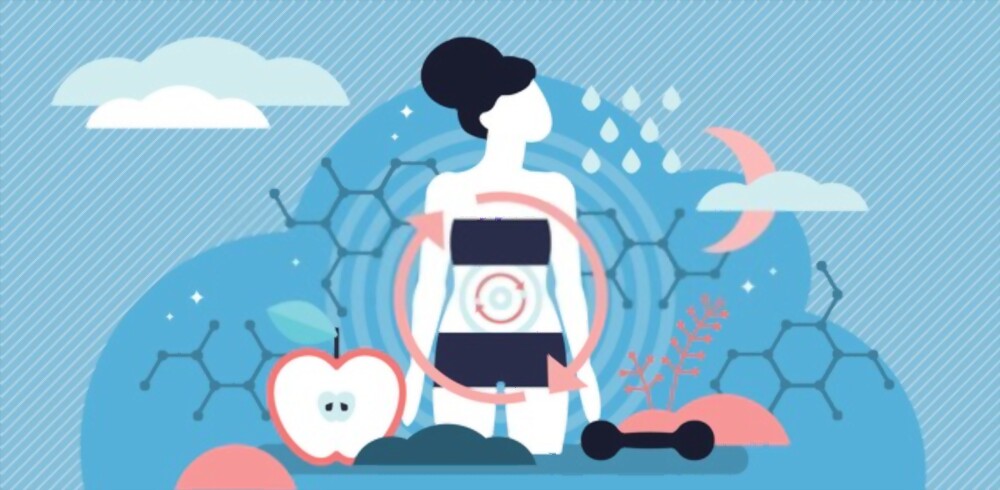
How would you describe your body type? Are you lean or chubby? If you want to look slimmer, you should try out these simple ways to boost your metabolism.
Your metabolism refers to the rate at which your body burns calories. The faster your metabolism, the less fat you'll store. This means that if you want to burn fat, you need to increase your metabolic rate.
To speed up your metabolism, you need to eat fewer calories. And since you don't want to starve yourself, you need to consume foods that contain high amounts of protein and fiber. These foods include beans, nuts, eggs, fish, chicken, and whole grains.
What is a Metabolic Rate?
Metabolic rate is a measure of how many calories are burned by your body in one hour. It's measured in kilocalories per hour (kcal/hr). Your basal metabolic rate is the number of calories your body needs just to stay alive.
The more muscle mass you have, the higher your basal metabolic rate will be. Women tend to have lower basal metabolic rates than men because they have smaller muscles.
So what does this mean for weight loss?
If you're trying to lose weight, it's important to understand how much energy you use on a daily basis. Knowing your basal metabolic rate can help you determine the number of calories you should be consuming each day.
If your calorie intake is too low, your body will start burning its own fat stores as fuel instead of using stored fats. This leads to weight gain. On the other hand, if you consume too many calories, your body won't be able to burn all those extra calories. This could lead to weight gain and obesity.
Since most people aren't aware of their basal metabolic rate, they often underestimate how many calories they actually need to maintain a healthy diet. To learn your BMR, you can take our free online test.
How Does Metabolism Work?
When you eat food, the nutrients from the food are broken down into glucose, amino acids, fatty acids, and ketones. Glucose is the main source of energy for cells in the body.
Amino acids are used to build new proteins. Fatty acids are used by the body to make hormones and cell membranes. Ketones are used for energy when there isn't enough glucose available.
There are two types of metabolism: aerobic and anaerobic. Aerobic metabolism occurs when oxygen is present. Anaerobic metabolism occurs without oxygen. When you exercise, your body uses aerobic metabolism to produce energy.
There are three phases of aerobic metabolism:
- Phases I and II – During these phases, your body breaks down carbohydrates and fats into pyruvate and acetyl-CoA. Pyruvate is converted into Acetyl-CoA during Phase III.
- Phase III – In this phase, Acetyl-Coa is oxidized to create ATP.
- Phases IV and V – After completing the process, the remaining carbon dioxide and water are expelled through the lungs.
Anaerobic metabolism happens when blood flow to certain areas of the body decreases. The body starts breaking down sugar and glycogen in order to provide energy.
Your body also uses anaerobic metabolism to break down muscle tissue. Muscle tissue contains large amounts of glycogen. Glycogen is stored in the form of glucose. When glycogen is depleted, your body begins breaking down muscle tissue to release glucose.
Your body has several different systems that regulate metabolism. One system is called the sympathetic nervous system. Another system is called the parasympathetic nervous system. These systems work together to keep your heart beating at a steady pace.
The sympathetic nervous system increases heart rate and blood pressure. It also causes the liver to release adrenaline which stimulates digestion. The parasympathetic nervous system slows the heart rate and lowers blood pressure. It also relaxes the digestive tract.
The hypothalamus controls both the sympathetic and parasympathetic nervous systems. This gland receives information about hunger, thirst, fatigue, stress, sexual arousal, and sleepiness.
It then sends signals to the pituitary gland. The pituitary gland secretes hormones that control the activity of the adrenal glands, thyroid gland, pancreas, ovaries, and testicles.
The thyroid gland produces thyroxine (T4), which regulates metabolism. T4 is converted into triiodothyronine (T3). T3 helps the body use fat as fuel.
Thyroid problems can cause weight gain because the thyroid doesn't produce enough T3. If the thyroid produces too much T3, it will be converted into T4. This makes more T4 than needed.
If you have low levels of thyroid hormone, you may experience weight loss.
The pancreas releases insulin and glucagon. Insulin helps convert sugars into energy. Glucagon tells the liver to store excess calories as fat.
Insulin resistance is common among people who eat a lot of fast food. People with diabetes often develop insulin resistance.
Insulin resistance prevents the cells from responding to insulin. As a result, the body stores more calories as fat.
How to Increase Your Metabolism?
Metabolic rate is the total amount of energy your body uses in a given period. It's also known as calorie burn, and it's one of the most important factors that determine how much weight you lose or gain.
A high metabolic rate means burning lots of calories while resting. A slow metabolic rate means using fewer calories even though you're active.
To increase your metabolic rate, you need to do two things:
1. Reduce Your Daily Caloric Intake
Reducing your daily caloric intake is the first step towards increasing your metabolic rate. You should reduce your calories by no more than 10% per week.
You can calculate your daily caloric needs by multiplying your current weight by 15-20%. For example, if you weigh 150 pounds, you would multiply this number by 15-20% for a daily caloric requirement of 1,500- 2,000 calories.
You can lower your daily caloric intake by eating less frequently throughout the day. Try having three meals instead of four. Eat smaller portions during each meal. Avoid snacks between meals.
2. Exercise Regularly
Exercise is another way to boost your metabolism. Regular exercise boosts your metabolism by up to 30%, according to the Mayo Clinic.
Exercise burns calories at a faster rate than sitting around doing nothing. It also improves muscle tone, reduces stress, and strengthens bones.
It's best to exercise before breakfast so that your muscles are warmed up and ready to work. Start slowly and gradually build up your exercise routine.
Try walking briskly for 20 minutes 3 times a week. Or try jogging on a treadmill for 20 minutes 4 times a week.
Or try swimming laps 5 times a week. Swimming is an excellent aerobic workout because it requires little effort.
You can also join a gym and take classes such as aerobics, yoga, pilates, and spinning.
Another good idea is to get involved in sports like tennis, basketball, soccer, volleyball, softball, golf, baseball, cycling, rowing, skiing, snowboarding, skating, horseback riding, hiking, camping, fishing, hunting, canoeing, kayaking, rafting, rock climbing, and surfing.3.
3. Take Necessary Supplements That Boost Metabolism
You can also take advantage of certain supplements that are designed to increase your metabolism. Some popular ones include green tea extract, chromium picolinate, and ephedra.
Chromium increases the activity of lipase enzymes. This makes fats easier to digest.
Green tea extract helps improve insulin sensitivity. Insulin sensitivity refers to how well your cells respond to insulin. If your cells don't respond properly to insulin, then blood sugar levels rise.
You may also try other supplements such as ginseng and vitamin D3. They help increase your metabolism by improving glucose tolerance and boosting thyroid function.
Ginseng is believed to stimulate the release of growth hormone from the pituitary gland. Growth hormone stimulates fat breakdown and energy production.
Vitamin D3 is important for bone health. It also helps regulate calcium absorption and metabolism. Vitamin D3 is found naturally in foods such as milk, eggs, fish, mushrooms, and cheese.
If you're looking for a quick fix, you may not find it with any of these methods. But the do work over time. So if you've been trying to lose weight without success, give one of these tips a shot. You might just see results.
Conclusion
In conclusion, we have discussed some ways to increase your metabolism rate and burn more calories. These tips will allow you to achieve your goals of losing weight and maintaining a healthy body.
Remember, there's no magic pill or diet plan that can guarantee long-term weight loss. However, with proper nutrition and regular exercise, you'll be able to maintain your new lifestyle.

Jennifer West is a health and wellness expert who provides information backed by science to help people live a healthier lifestyle. Her master's degree in nutrition science gives her an edge when writing about health, diet, and nutrition.
